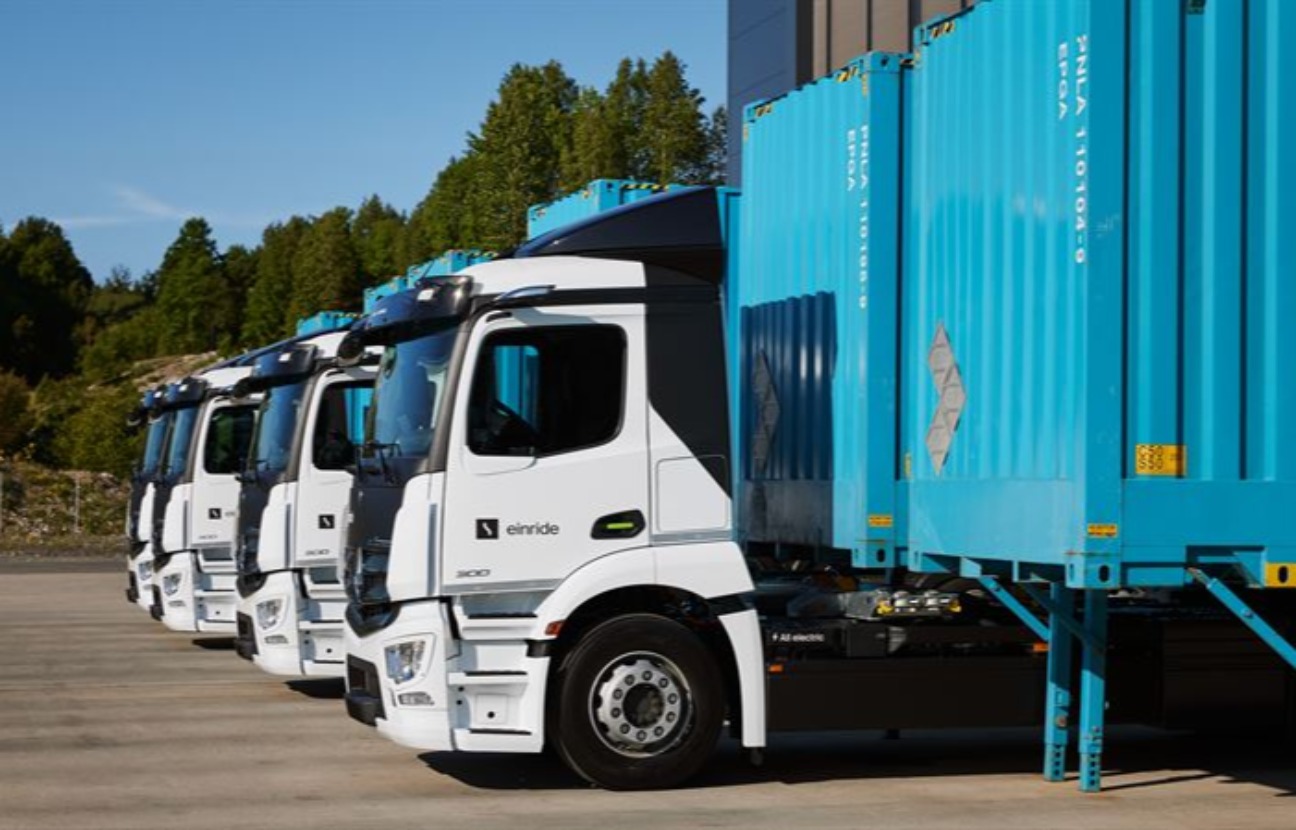Einride and PostNord double down on electric freight in Norway
Partnership demonstrates scalable impact

In Europe’s race to decarbonise transport, heavy-duty electric freight is one of the last frontiers. Trucks represent less than two percent of vehicles on European roads but nearly a quarter of road-transport emissions. As governments tighten net-zero targets, the push to electrify long-haul logistics is intensifying — but progress remains uneven.
That’s why Einride’s partnership with PostNord in Norway is attracting attention. The Swedish freight-technology company and the Nordic parcel and logistics group have announced an expansion that will double the amount of electric transport on Norwegian roads to 1.3 million kilometres annually, marking one of the largest deployments of heavy-duty electric trucks in the region.
To understand what this milestone means for the future of zero-emission logistics, MoveTheNeedle.News spoke with David Hallgren, General Manager for Electric Mobility at Einride. His insights highlight both the opportunities and the operational hurdles in the ongoing transition from diesel to digital, electric freight.
From startup to freight-tech operator
Founded in Stockholm in 2016 by Robert Falck, Linnéa Kornehed Falck, and Filip Lilja, Einride set out to rethink how road freight could be electrified and automated. Instead of manufacturing trucks alone, the company built a technology ecosystem that combines vehicles, charging infrastructure and a proprietary digital platform called Saga.
Its early fame came from the futuristic Einride Pod — a cabless autonomous truck — but its commercial breakthrough has been in operating electric freight networks for major shippers including PostNord, PepsiCo, Heineken, and GE Appliances.
The company today offers a full-service ecosystem that includes electric and autonomous vehicles, digital optimisation tools, and infrastructure integration. As Hallgren explains it: “We deliver turnkey freight solutions to global shippers… who rely on us to support their shift away from diesel.”
The company’s model — sometimes called freight-as-a-service — is designed for high-utilisation, repeatable freight flows, ensuring that each deployment contributes to a scalable, long-term logistics network.
Norway: a proving ground for electric trucks
Norway already leads the world in electric mobility, with battery vehicles dominating passenger car sales. Its freight electrification efforts are also gaining traction, as underscored by Einride's expanded partnership with PostNord. Under the new plan, 14 heavy-duty electric trucks with trailers will operate around the Oslo region, hauling parcels over 1.3 million km annually. The expansion is expected to cut CO₂ emissions by roughly 1,300 tonnes per year.
"It's a significant step in our joint roadmap to decarbonise parcel transportation across the region,” says Hallgren. “From the moment we went live with PostNord about 18 months ago, we’ve worked closely to scale electric freight operations in line with vehicle availability, infrastructure readiness, and local needs.”
The plan covers a relatively small slice of Norway’s total freight mileage, but, all the same, it's an important step toward proving that electric trucks can operate at commercial scale, particularly given that Norway is one of Europe’s most demanding environments for electric vehicles.
“Norway poses logistical challenges due to its mountainous terrain and dispersed population,” Hallgren admits. “But electric freight is already proving to be highly effective, especially in and around more densely populated areas like Oslo.”
This is also helped by the country’s progressive policy landscape, with generous EV incentives, carbon taxes, and planned zero-emission zones as key enablers.
Why electrifying heavy freight remains hard
Electrifying heavy-duty trucks presents a unique mix of challenges that have slowed adoption across Europe:
-
Battery weight and range limits reduce payload capacity and make long-haul routes difficult.
-
Charging times remain long, with megawatt-scale chargers only beginning to roll out.
-
High upfront costs and limited model availability make fleet conversions capital-intensive.
-
Regions with cold climates and mountainous terrain, such as Norway, cut battery efficiency and range.
These operational constraints make digital optimisation essential. Einride’s Saga platform plays a central role in mitigating them.
“Saga is the intelligence layer of our ecosystem,” says Hallgren. “It uses AI to optimise everything from fleet planning and route efficiency to energy usage and charger placement. By integrating digital and operational decision-making, Saga maximises vehicle uptime and lowers total cost of ownership.”
He cites a Fraunhofer ISI study using data from Einride’s customer REWE Group in Germany, showing that advanced route optimisation can raise electrification rates and cut total cost of ownership (TCO) by up to 13 percent.
That finding suggests that electric freight can be competitive — if operators deploy it strategically and back it with intelligent digital systems.
Scaling across Europe
Einride’s European expansion is gathering pace. The company now operates in Sweden, Denmark, Germany, and Austria, and has entered the U.S. freight market. Earlier this month it announced a $100 million funding round to accelerate growth with partners like PostNord.
The two companies announced another milestone in September 2025, by completing the world’s first cabless, electric, autonomous cross-border delivery between Sweden and Norway — a demonstration of both technological maturity and regulatory cooperation.
Looking ahead, Einride sees electric freight entering the mainstream, with autonomous transport following on a longer, phased timeline.
“We’re already operating autonomous vehicles on public roads in Europe and the U.S.,” Hallgren adds. “Over the coming years, we will move from single-digit autonomous vehicle deployments into the tens and eventually hundreds, focused on high-utilisation, repeatable routes. Einride’s role is to lead the transition by enabling real-world deployments that scale over time.”